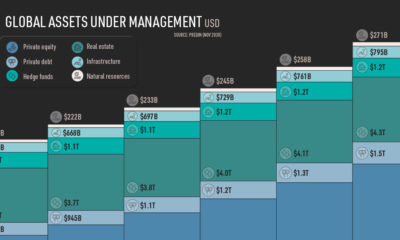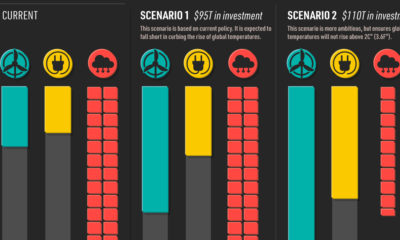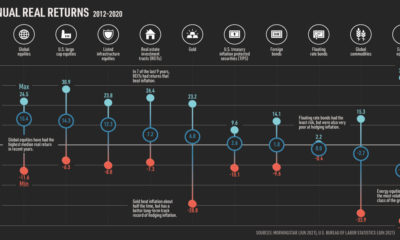Infrastructure Megatrends: Filling the Investment Gap
With each passing year, significant investment is required to maintain and improve America’s infrastructure.
When these investments fall behind their targets, an infrastructure gap can emerge. These deficits have a negative impact on the entire American economy, affecting things like roads, highways, water lines, and schools.
In this Markets in a Minute chart from New York Life Investments, we quantify America’s infrastructure gap using research from the American Society of Civil Engineers (ASCE).
The Big Picture
According to ASCE’s 2021 report, $13 trillion in infrastructure spending will be required through 2039 to support America’s economic growth. These projections include the cost of building new infrastructure, as well as the cost of maintaining existing assets.
With expected funding estimated at $7.3 trillion, that leaves a deficit of $5.7 trillion.
If this gap is not filled, the ASCE warns there will be widespread consequences. Goods are likely to become more expensive to produce and transport, resulting in higher costs for consumers. Higher costs could also reduce the international competitiveness of American companies.
The table below outlines some of the most critical findings from the ASCE’s research.
| Costs Associated with the Infrastructure Gap, by 2039 | Details |
| $23 trillion in lost business productivity | - Deteriorating infrastructure can increase commute times and decrease productivity
- Americans spend nearly $130 billion each year on extra vehicle repairs due to poor road conditions
|
| $10 trillion loss in GDP | - Aging utilities can be a drag on the U.S. economy
- 65% of counties have average internet speeds that are lower than the FCC’s* definition of broadband
|
| $2.4 trillion in lost exports | - Higher business costs will reduce the competitiveness of U.S. exports
- U.S. manufacturing suffers from poor infrastructure because it often relies on energy, water, and transportation.
|
*Federal Communications Commission
For the average American household, these impacts could lead to a $3,300 decrease in annual disposable income.
Aviation: A Critical Need for Investment
U.S. airports are facing mounting capacity challenges as more people travel each year (this trend has taken a pause during the COVID-19 pandemic).
Over a two-year period ending in 2019, traffic through America’s airports grew 24% to reach 1.2 billion passengers per year. On the supply side, flight service increased by just 5%. Altogether, insufficient aviation infrastructure resulted in a total of 96 million delay minutes in 2019, up from 66 million in 2017.
The following chart shows a breakdown of how U.S. aviation investment would need to be distributed.
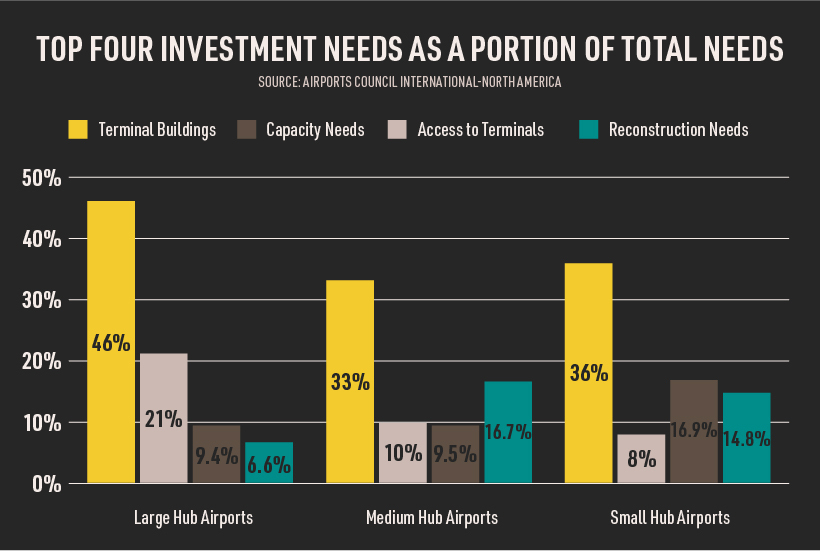
The Federal Aviation Administration estimates that the capital needs for terminal buildings is already more than $6.6 billion.
How Investors Can Benefit
Efforts to address the infrastructure gap are gaining steam—Democrats and Republicans recently joined together to pass a $1 trillion infrastructure bill—but this won’t be enough to fill the gap completely. Nor will it secure the future of the America’s infrastructure.
The good news is that publicly listed infrastructure companies can play a significant role. As owners of essential long-duration assets, these businesses are investing billions annually into upgrades and expansions.
For investors, this supports consistent organic growth and steady income. Analysis by CBRE Clarion Securities determined that income growth has accounted for 50% of listed infrastructure’s total return over the past 20 years.
Income-seeking investors may also find the sector’s defensive characteristics to be attractive. CBRE’s analysis found that listed infrastructure has captured just 65% of the global equity market downside, compared to 81% of the upside.

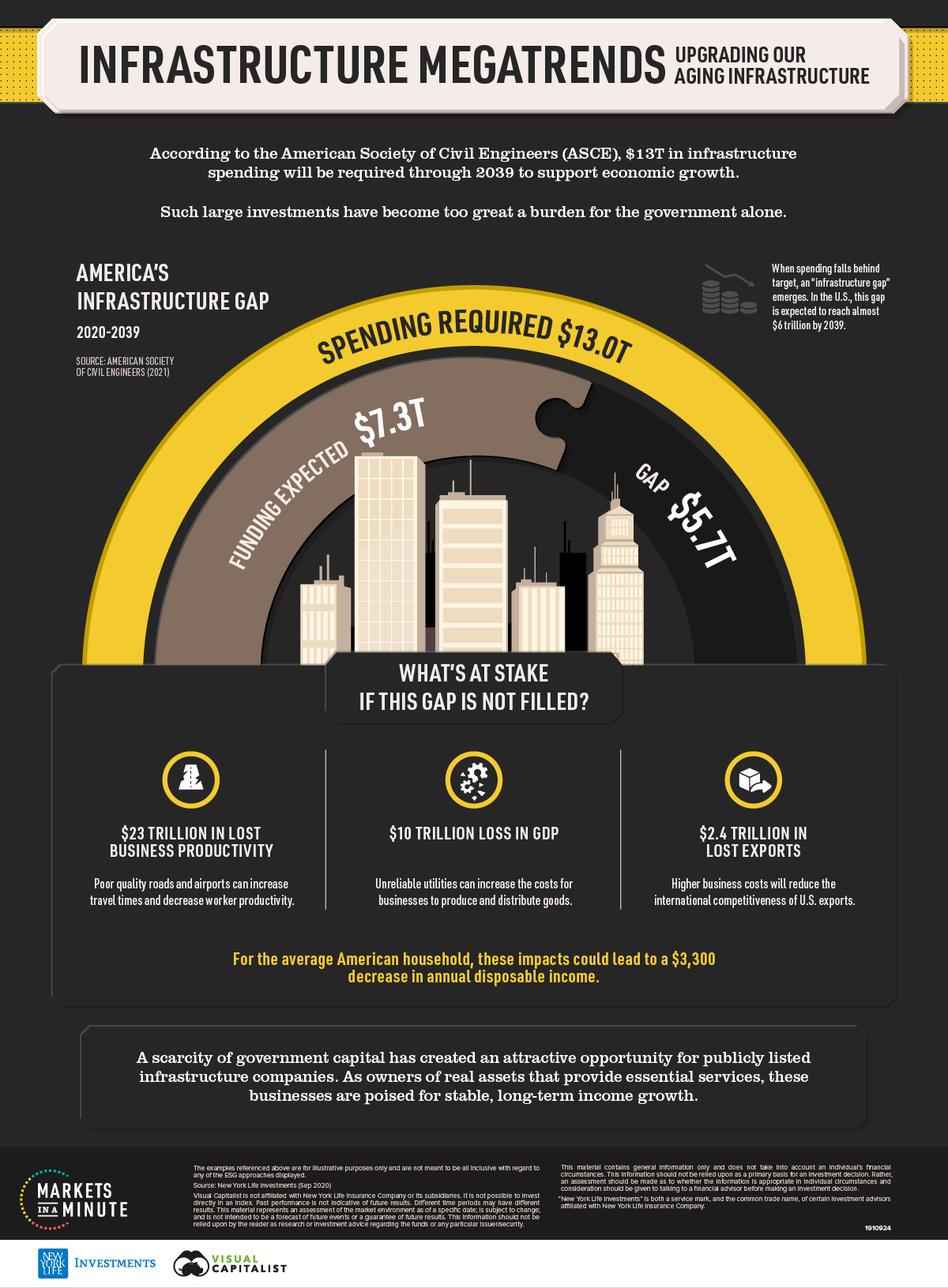
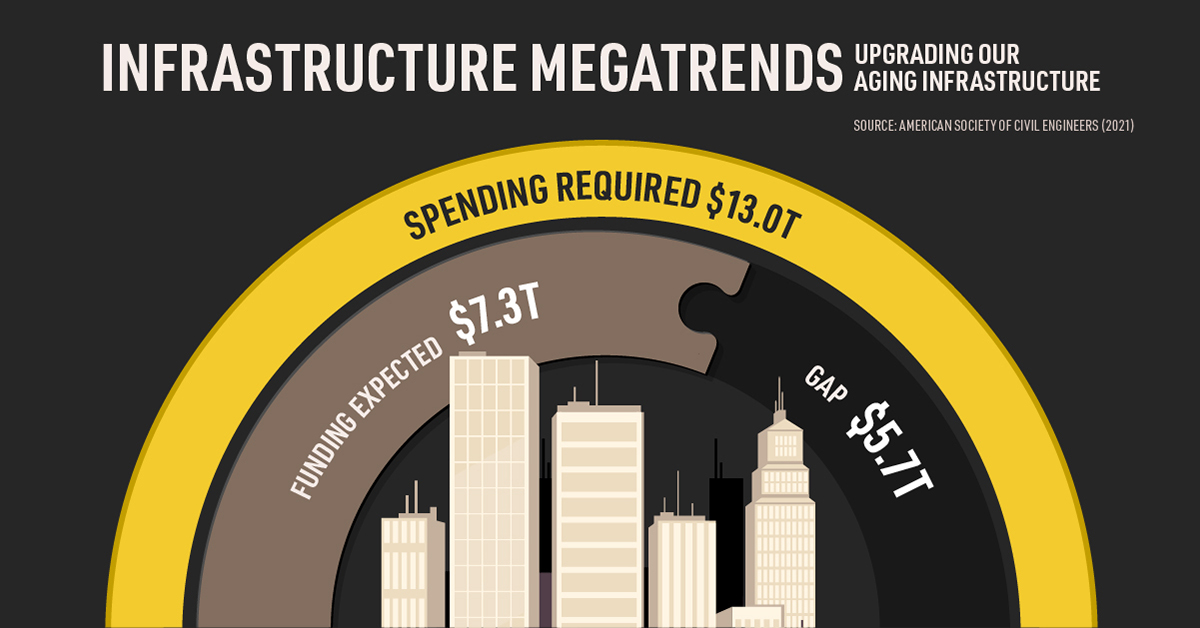

 Infographics2 years ago
Infographics2 years ago
 Markets in a Minute2 years ago
Markets in a Minute2 years ago
 Markets in a Minute2 years ago
Markets in a Minute2 years ago
 Infographics2 years ago
Infographics2 years ago
 Markets in a Minute1 year ago
Markets in a Minute1 year ago
 Infographics3 years ago
Infographics3 years ago
 Markets in a Minute2 years ago
Markets in a Minute2 years ago
 Infographics1 year ago
Infographics1 year ago






